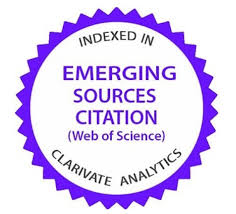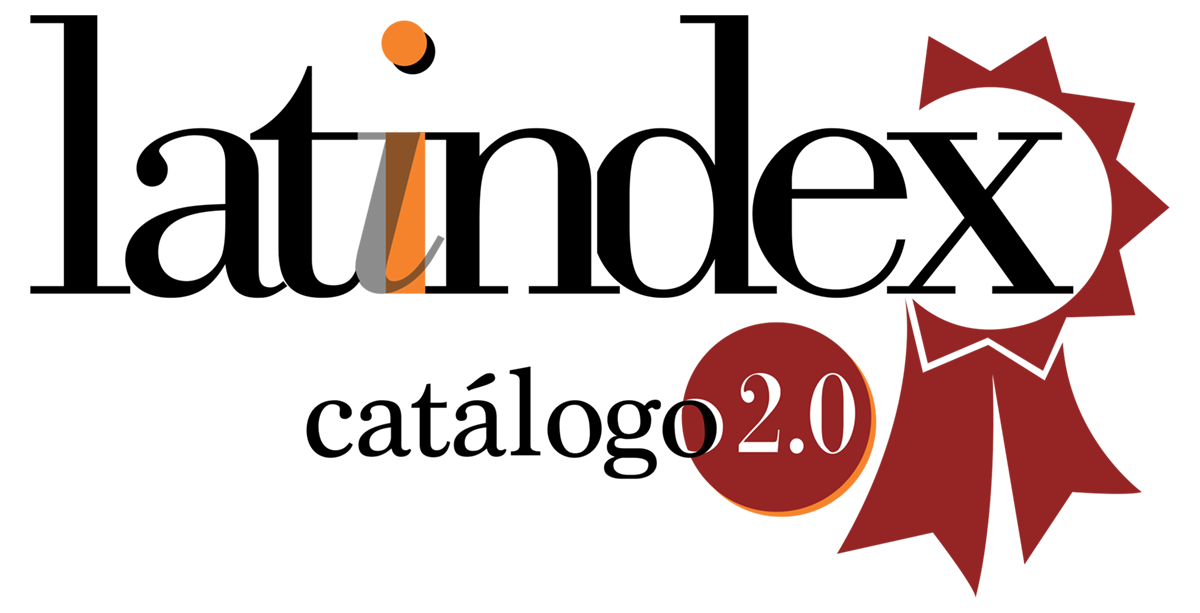What is a “case”?
DOI:
https://doi.org/10.35295/osls.iisl/0000-0000-0000-1149Palabras clave:
Litigation, case, dispute processing, courts, claims, Litigio, caso, proceso de disputas, tribunales, demandasResumen
Este artículo se pregunta por el concepto de “caso” en un tribunal, haciendo un esfuerzo por aclarar preocupaciones subyacentes a los debates sobre si hay “demasiada” o “demasiado poca” litigación. Una perspectiva sobre los litigios va de abajo arriba, examinando las consideraciones y motivos de las partes que interponen una demanda civil. Esa perspectiva abarca teorías sobre el litigio y las estructuras económicas y sociales, la transformación de las disputas, la participación política y la psicología. Una visión alternativa, de arriba abajo, examina los litigios desde la perspectiva del gobierno, tomando también en consideración sus intereses en la resolución de conflictos, el control social y las capacidades institucionales de los tribunales. El artículo revisa y critica literatura existente sobre estas perspectivas, y llega a la conclusión de que es importante integrarlas.
Descargas
Metrics
Estadísticas globales ℹ️
|
920
Visualizaciones
|
811
Descargas
|
|
1731
Total
|
|
Citas
Alter, K., and Vargas, J., 2000. Explaining variation in the use of European litigation strategies: European Community law and British gender equality policy. Comparative Political Studies [online], 33(4), 452–482. Available from: https://doi.org/10.1177/0010414000033004002 [Accessed 1 March 2021]. DOI: https://doi.org/10.1177/0010414000033004002
Baum, L., 2011. Specializing the Courts. University of Chicago Press. DOI: https://doi.org/10.7208/chicago/9780226039565.001.0001
Becker, H., 1963. Outsiders: Studies in the Sociology of Deviance. Chicago University Press.
Black, D., 1976. The Behavior of Law. New York: Academic Press.
Blackstone, A., Uggen, C., and McLaughlin, H., 2009. Legal consciousness and responses to sexual harassment. Law and Society Review [online], 43(3), 631–666. Available from: https://doi.org/10.1111/j.1540-5893.2009.00384.x [Accessed 1 March 2021]. DOI: https://doi.org/10.1111/j.1540-5893.2009.00384.x
Bohannan, P., 1965. The differing realms of law. American Anthropologist [online], 67(6), 33–42. Available from: https://doi.org/10.1525/aa.1965.67.6.02a00930 [Accessed 1 March 2021]. DOI: https://doi.org/10.1525/aa.1965.67.6.02a00930
Cain, M., 1979. The general practice lawyer and the client: towards a radical conception. International Journal of the Sociology of Law, 7, 331. DOI: https://doi.org/10.1007/978-1-349-16979-5_6
Cicourel, A., 1968. The Social Organization of Juvenile Justice. New York: Wiley. DOI: https://doi.org/10.2307/1141851
Coates, D., and Penrod, S., 1981. Social psychology and the emergence of disputes. Law and Society Review [online], 15(3–4), 655–680. Available from: https://doi.org/10.2307/3053506 [Accessed 1 March 2021]. DOI: https://doi.org/10.2307/3053506
Cooter, R.D., and Rubinfeld, D.L., 1990. Trial courts: An economic perspective. Law and Society Review [online], 24(2), 533–546. Available from: https://doi.org/10.2307/3053694 [Accessed 1 March 2021]. DOI: https://doi.org/10.2307/3053694
Daniels, S., 1990. Caseload dynamics and the nature of change: The civil business of trial courts in four Illinois counties. Law and Society Review [online], 24(2), 299–320. Available from: https://doi.org/10.2307/3053680 [Accessed 1 March 2021]. DOI: https://doi.org/10.2307/3053680
Engel, D.M., 1984. The oven bird’s song: Insiders, outsiders, and personal injuries in an American Community. Law and Society Review [online], 18(4), 551–582. Available from: https://doi.org/10.2307/3053447 [Accessed 1 March 2021]. DOI: https://doi.org/10.2307/3053447
Engel, D.M., 2016. The Myth of the Litigious Society: Why we Don’t Sue. Chicago University Press. DOI: https://doi.org/10.7208/chicago/9780226305189.001.0001
Engel, D.M., and Munger, F.W., 2003. Rights of Inclusion: Law and Identity in the Life Stories of Americans with Disabilities. University of Chicago Press. DOI: https://doi.org/10.7208/chicago/9780226208343.001.0001
Ewick, P., and Silbey, S.S., 1998. The Common Place of Law: Stories from Everyday Life. University of Chicago Press. DOI: https://doi.org/10.7208/chicago/9780226212708.001.0001
Feeley, M.M., and Rubin, E., 1998. Judicial Policy Making and the Modern State: How the Courts Reformed America’s Prisons. New York: Cambridge University Press.
Felstiner, W.L.F., 1974. Influences of social organization on dispute processing. Law and Society Review [online], 9(1), 63. Available from: https://doi.org/10.2307/3053022 [Accessed 1 March 2021]. DOI: https://doi.org/10.2307/3053022
Felstiner, W.L.F., Abel, R.L., and Sarat, A., 1981. The emergence and transformation of disputes: Naming, blaming, claiming. Law and Society Review [online], 15(3–4), 631–654. Available from: https://doi.org/10.2307/3053505 [Accessed 1 March 2021]. DOI: https://doi.org/10.2307/3053505
Friedman, L.M., 1983. Courts over time: A survey of theories and research. In: K.O. Boyum and L. Mather, eds., Empirical Theories About Courts. New York: Longman, 9–50.
Friedman, L.M., 1990. Opening the time capsule: A progress report on studies of courts over time. Law & Society Review [online], 24(2), 229–240. Available from: https://doi.org/10.2307/3053675 [Accessed 1 March 2021]. DOI: https://doi.org/10.2307/3053675
Friedman, L.M., and Percival, R.V., 1976. A tale of two courts: Litigation in Alameda and San Benito counties. Law and Society Review [online], 10(2), 267. Available from: https://doi.org/10.2307/3053101 [Accessed 1 March 2021]. DOI: https://doi.org/10.2307/3053101
Frohman, L., 1997. Convictability and discordant locales: reproducing race, class, and gender ideologies in prosecutorial decision-making. Law & Society Review [online], 31(3), 531–66. Available from: https://doi.org/10.2307/3054045 [Accessed 1 March 2021]. DOI: https://doi.org/10.2307/3054045
Galanter, M., 1974. Why the “Haves” comes out ahead: Speculations on the limits of legal change. Law and Society Review [online], 9(1), 95–160. Available from: https://doi.org/10.2307/3053023 [Accessed 1 March 2021]. DOI: https://doi.org/10.2307/3053023
Galanter, M., 1983. The Radiating Effects of Courts. In: K.O. Boyum and L. Mather, eds., Empirical Theories About Courts. New York: Longman, 117–142.
Galanter, M., 1990. Case congregations and their careers. Law and Society Review [online], 24(2), 371–395. Available from: https://doi.org/10.2307/3053686 [Accessed 1 March 2021]. DOI: https://doi.org/10.2307/3053686
Genn, H., 1999. Paths to Justice. Oxford: Hart.
Gluckman, M., 1967. The Judicial Process among the Barotse of Northern Rhodesia. Manchester University Press. (Originally published in 1955).
Granfield, R., and Mather, L., 2009. Pro bono, the public good, and the legal profession: An introduction. In: R. Granfield and L. Mather, eds., Private Lawyers and the Public Interest: The Evolving Role of Pro Bono in the Legal Profession. Oxford University Press, 1–22. DOI: https://doi.org/10.1093/oso/9780195386073.003.0001
Gulliver, P.H., 1963. Social Control in an African society: A Study of the Arusha, Agricultural Masai of Northern Tanganyika. Boston University Press.
Haltom, W., and McCann, M., 2004. Distorting the Law: Politics, Media, and the Litigation Crisis. University of Chicago Press. DOI: https://doi.org/10.7208/chicago/9780226314693.001.0001
Harrington, C.B., 1985. Shadow Justice: The Ideology and Institutionalization of Alternatives to Court. Westport: Greenwood Press. DOI: https://doi.org/10.5040/9798216013846
Hatcher, L., 2005. Economic Libertarians, property, and institutions: linking Activism, ideas, and identities among property rights advocates. In: A. Sarat and S. Scheingold, eds., The World Cause Lawyers Make. Redwood City: Stanford University Press, 112–146. DOI: https://doi.org/10.1515/9781503625440-007
Hirschl, R., 2008. The judicialization of politics. In: K.E. Whittington, R.D. Kelemen and G.A. Caldeira, eds., The Oxford Handbook of Law and Politics. Oxford University Press.
Horan, D.J., Grant, E.R., and Cunningham, P.C., eds., 1987. Abortion and the Constitution: Reversing Roe v Wade through the Courts. Washington, DC: Georgetown University Press.
Kagan, R.A., 2001. Adversarial Legalism: The American way of law. Cambridge, MA: Harvard University Press. DOI: https://doi.org/10.4159/9780674039278
Katvan, E., and Shnoor, B., 2021. Don Quixote de la Corte: Serial Litigants, Emotions, and Access to Justice. Oñati Socio-Legal Series [online], 11(this issue). Available from: https://doi.org/10.35295/osls.iisl/0000-0000-0000-1117 [Accessed 1 March 2021]. DOI: https://doi.org/10.35295/osls.iisl/0000-0000-0000-1117
Kidder, R., 1975. Afterword: Change and structure in dispute processing. Law & Society Review [online], 9(2), 385. Available from: https://doi.org/10.2307/3052983 [Accessed 1 March 2021]. DOI: https://doi.org/10.2307/3052983
Kluger, R., 1975. Simple Justice. New York: Alfred A. Knopf.
Krislov, S., 1983. Theoretical perspectives on case load studies: A critique and a beginning, In: K.O. Boyum and L. Mather, eds., Empirical Theories About Courts. New York: Longman, 161–187.
Kritzer, H.M., 2004. Risks, Reputations, and Rewards: Contingency Fee Legal Practice in the United States. Redwood City: Stanford University Press. DOI: https://doi.org/10.1515/9781503624702
Kritzer, H.M., 2011, The antecedents of disputes: Complaining and claiming. Oñati Socio-Legal Series [online], 1(6), 1–31. Available from: http://opo.iisj.net/index.php/osls/article/viewFile/53/225 [Accessed 1 March 2021].
LaFave, W., 1965. Arrest: The Decision to Take a Suspect into Custody. Boston: Little, Brown & Co.
Lahav, A., 2017. In Praise of Litigation. New York: Oxford University Press.
Legal case, 2021. Wikipedia [online], 3 January. Available from: https://en.wikipedia.org/wiki/Legal_case [Accessed 1 March 2021].
Levin, A., and Alkoby, A., 2021. More lawyers, more litigation? Exploring trends in litigation and the legal profession in Ontario, Canada. Oñati Socio-Legal Series [online], 11(this issue). Available from: https://doi.org/10.35295/osls.iisl/0000-0000-0000-1118 [Accessed 1 March 2021]. DOI: https://doi.org/10.35295/osls.iisl/0000-0000-0000-1118
Levy, A., 2013. The perfect wife. The New Yorker, 30 September, 54–63.
Macaulay, S., 1963. Non-Contractual relations in business: A preliminary study. American Sociological Review [online], 28(1), 55. Available from: https://doi.org/10.2307/2090458 [Accessed 1 March 2021]. DOI: https://doi.org/10.2307/2090458
Marshall, A., 2003. Injustice frames, legality, and the everyday construction of sexual harassment. Law and Social Inquiry [online], 28(3), 659–689. Available from: https://doi.org/10.1111/j.1747-4469.2003.tb00211.x [Accessed 1 March 2021]. DOI: https://doi.org/10.1111/j.1747-4469.2003.tb00211.x
Mather, L., 1998. Theorizing trial courts: Lawyers, policymaking, and tobacco litigation. Law and Social Inquiry [online], 23(4), 897–940. Available from: https://doi.org/10.1111/j.1747-4469.1998.tb00037.x [Accessed 1 March 2021]. DOI: https://doi.org/10.1086/492664
Mather, L., 2009. Lawyers and Solicitors Separated by a Common Legal System: Anti-Tobacco Litigation in the United States and Britain. In: D.M. Engel and M. McCann, eds., Fault Lines: Tort Law as Cultural Practice. Redwood City: Stanford University Press.
Mather, L., 2018. Client selection: How lawyers reflect and influence community values. In: M.N. Trautner, ed., Insiders, Outsiders, & Law [online]. Cambridge University Press, 82–97. Available from: https://doi.org/10.1017/9781316979716.006 [Accessed 1 March 2021]. DOI: https://doi.org/10.1017/9781316979716.006
Mather, L., and Yngvesson, B., 1981. Language, audience, and the transformation of disputes. Law and Society Review [online], 15(3–4), 775–821. Available from: https://doi.org/10.2307/3053512 [Accessed 1 March 2021]. DOI: https://doi.org/10.2307/3053512
Mather, L., and Yngvesson, B., 2015. Disputes, social construction and transformation of. In: J.D. Wright, ed., International Encyclopedia of the Social and Behavioral Sciences. 2nd ed. [online]. Elsevier, 560–566. Available from: https://doi.org/10.1016/B978-0-08-097086-8.86024-9 [Accessed 1 March 2021]. DOI: https://doi.org/10.1016/B978-0-08-097086-8.86024-9
McIntosh, W., 1981. 150 Years of litigation and dispute settlement: a court tale. Law and Society Review [online], 15(3–4), 823–848. Available from: https://doi.org/10.2307/3053513 [Accessed 1 March 2021]. DOI: https://doi.org/10.2307/3053513
Menkel-Meadow, C., 1984. Toward another view of legal negotiation: The structure of problem solving. UCLA Law Review, 31, 754–842.
Merry, S.E., 1990. Getting Justice and Getting Even: Legal Consciousness among Working-Class Americans. University of Chicago Press.
Miller, R.E., and Sarat, A., 1981. Grievances, claims, and disputes: Assessing the adversary culture. Law and Society Review [online], 15(3–4), 525–565. Available from: https://doi.org/10.2307/3053502 [Accessed 1 March 2021]. DOI: https://doi.org/10.2307/3053502
Moustafa, T., and Ginsburg, T., 2008. Introduction: The functions of courts in authoritarian politics. In: T. Ginsburg and T. Moustafa, eds., Rule by Law: The Politics of Courts in Authoritarian Regimes. Cambridge University Press. DOI: https://doi.org/10.1017/CBO9780511814822
Munger, F., 1988. Tort litigation and social change: accidents and trial court litigation in West Virginia, 1870–1940. Buffalo Law Review [online], 36, 301. Available from: https://digitalcommons.nyls.edu/cgi/viewcontent.cgi?article=1716&context=fac_articles_chapters [Accessed 1 March 2021].
Munger, F., ed., 1990. Special Issue: Longitudinal Studies of Trial Courts. Law and Society Review [online], 24(2). Available from: https://www.jstor.org/stable/i354551 [Accessed 1 March 2021]. DOI: https://doi.org/10.1017/S0023921600029042
Murayama, M., 2012, Reconsidering the Japanese way of dispute resolution: What it is and why. In: H.N. Scheiber and T. Ginsburg, eds., Japanese Legal System: An Era of Transition. Berkeley: University of California Press, 66–87.
Nader, L., 1969 Styles of Court Procedure: To make the balance. In: L. Nader, ed., Law in Culture and Society. Chicago: Aldine.
Nader, L., and Todd, H.F., eds., 1978. The Disputing Process: Law in Ten Societies. New York: Columbia Press. DOI: https://doi.org/10.7312/nade93322
Peel, P., 2017. Renewing the longitudinal study of trial courts. Justice Systems Journal [online], 38(3), 290–305. Available from: https://doi.org/10.1080/0098261X.2017.1306816 [Accessed 1 March 2021]. DOI: https://doi.org/10.1080/0098261X.2017.1306816
PON staff, 2019. What is the Multi-Door Courthouse Concept. Program on negotiation, Harvard Law School [online], 22 August. Blog post. Available from: https://www.pon.harvard.edu/daily/international-negotiation-daily/a-discussion-with-frank-sander-about-the-multi-door-courthouse/ [Accessed 1 March 2021].
Reed, D.S., 2001. On Equal Terms: The Constitutional Politics of Educational Opportunity. Princeton University Press. DOI: https://doi.org/10.1515/9780691227733
Rosenberg, G.N., 1991. The Hollow Hope: Can Courts Bring About Social Change? University of Chicago Press.
Santos, B.S., 1977. The law of the oppressed: The construction and reproduction of legality in Pasargada. Law & Society Review [online], 12, 5–126. Available from: https://doi.org/10.2307/3053321 [Accessed 1 March 2021]. DOI: https://doi.org/10.2307/3053321
Sarat, A., and Grossman, J., 1975. Courts and conflict resolution: Problems in the mobilization of adjudication. American Political Science Review [online], 69, 1200. Available from: https://doi.org/10.2307/1955281 [Accessed 1 March 2021]. DOI: https://doi.org/10.2307/1955281
Sarat, A., and Scheingold, S., eds., 1998. Cause Lawyering. Oxford University Press. DOI: https://doi.org/10.1093/oso/9780195113198.001.0001
Shapiro, M., 1980. Courts: A Comparative and Political Analysis. University of Chicago Press. DOI: https://doi.org/10.7208/chicago/9780226161341.001.0001
Shapiro, M., 1993. The globalization of law. Indiana Journal of Global Legal Studies, 1(1), 37–64.
Skogan, W., 1984. Reporting crime to the police: the status of world research. Journal of Research on Crime and Delinquency [online], 2, 113–137. Available from: https://doi.org/10.1177/0022427884021002003 [Accessed 1 March 2021]. DOI: https://doi.org/10.1177/0022427884021002003
Stone, D., 2020. Counting: How We Use Numbers to Decide What Matters. New York: Livewright.
Toharia, J.J., 1974. Cambio social y vida jurídica en España. Madrid: Edicusa.
van Loon, F., and Langerwerf, E., 1990. Socioeconomic development and the evolution of litigation rates of civil courts in Belgium, 1835–1980. Law and Society Review [online], 24(2), 283–298. Available from: https://doi.org/10.2307/3053679 [Accessed 1 March 2021]. DOI: https://doi.org/10.2307/3053679
Vidmar, N., and Schuller, R.A., 1987. Individual differences and the pursuit of legal rights. Law and Human Behavior, 11, 299–317. DOI: https://doi.org/10.1007/BF01044743
Vose, C., 1959. Caucasians Only: The Supreme Court, the NAACP, and the Restrictive Covenant Cases. Berkeley: University of California Press. DOI: https://doi.org/10.1525/9780520325647
Wilson, J.Q., 1968. Varieties of Police Behavior. Cambridge, MA: Harvard University Press. DOI: https://doi.org/10.4159/9780674045200
Wollschläger, C., 1990. Civil litigation and modernization: The work of the municipal courts of Bremen, Germany, in five centuries, 1549–1984. Law and Society Review [online], 24(2), 261–282. Available from: https://doi.org/10.2307/3053678 [Accessed 1 March 2021]. DOI: https://doi.org/10.2307/3053678
Yngvesson, B., 1985. Re-examining continuing relations and the law. Wisconsin Law Review, 1985(3), 623–646.
Yngvesson, B., 1993. Virtuous Citizens, Disruptive Subjects: Order and Complaint in a New England Court. New York: Routledge.
Yngvesson, B., and Mather, L. 1983. Courts, moots and the disputing process, In: K.O. Boyum and L. Mather, eds., Empirical Theories About Courts. New York: Longman, 51–83.
Zemans, F., 1983. The neglected role of law in the political system. American Political Science Review, 77(3), 690–703. DOI: https://doi.org/10.2307/1957268
Descargas
Publicado
Cómo citar
Número
Sección
Licencia
Derechos de autor 2021 Lynn Mather

Esta obra está bajo una licencia internacional Creative Commons Atribución-NoComercial-SinDerivadas 4.0.
Los autores conservan el copyright de sus trabajos, que se publicarán en OSLS bajo una licencia Creative Commons Reconocimiento NoComercial SinObraDerivada. Puede consultar más detalles en: http://es.creativecommons.org/licencia/. Si no está de acuerdo con esta licencia, por favor, póngase en contacto con nosotros.
El autor concede los permisos necesarios para difundir la información bibliográfica del artículo, incluyendo el resumen, y autorizar a otros, incluyendo las bases de datos bibliográficas, de índices y servicios de alerta de contenidos, a copiar y comunicar esta información.
Para más información sobre los permisos para distribuir su artículo en cada fase de la producción, por favor, lea nuestra Política de Autoarchivo y Divulgación (en inglés).
Las condiciones de copyright con el nombre de autores y co-autores, y la licencia Creative Commons se mostrarán en el artículo. Estas condiciones se deben aceptar como parte del proceso de envío de un artículo a la revista. Por favor, asegúrese de que todos los co-autores se mencionan correctamente, y que entienden y aceptan estos términos.






















